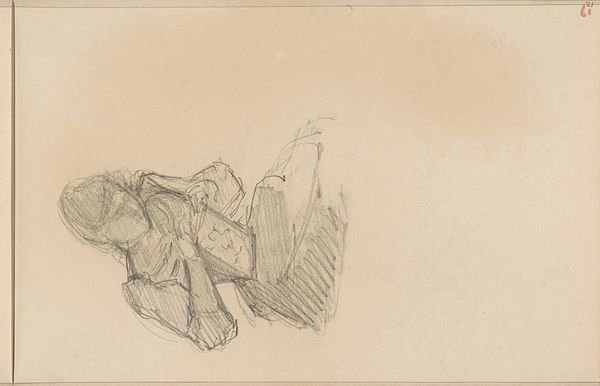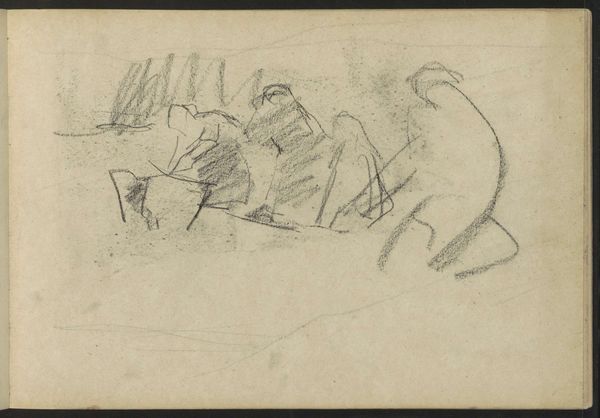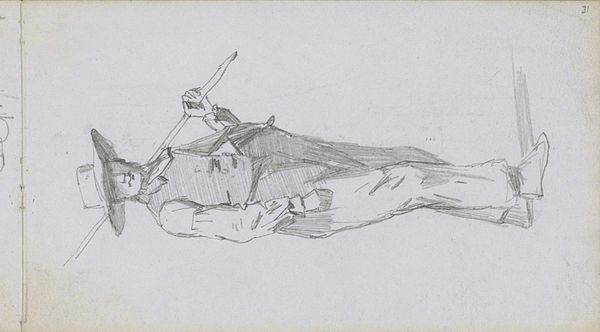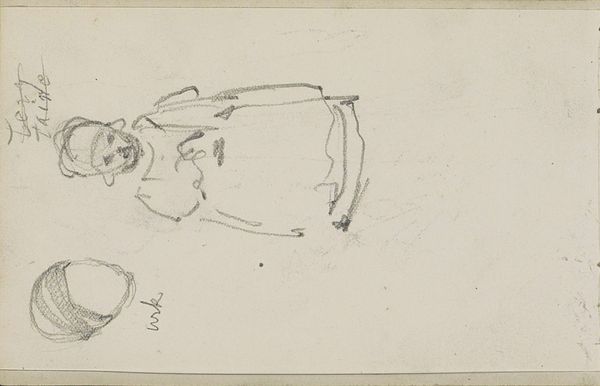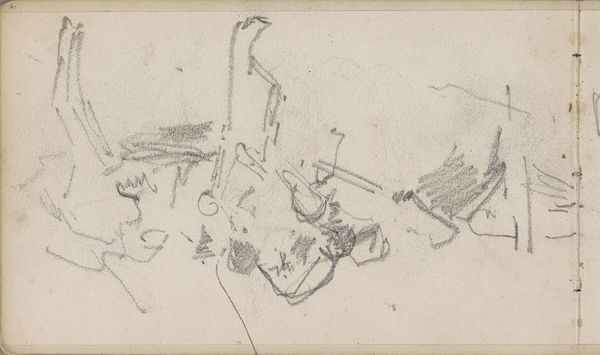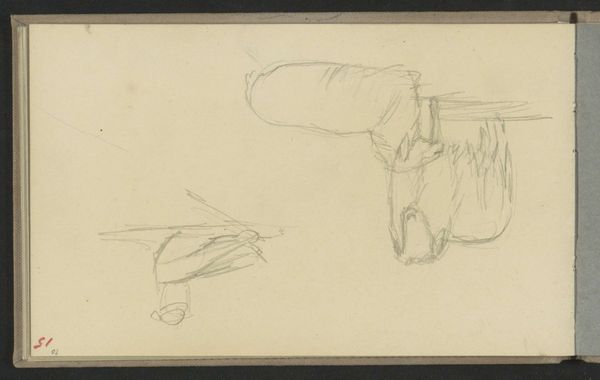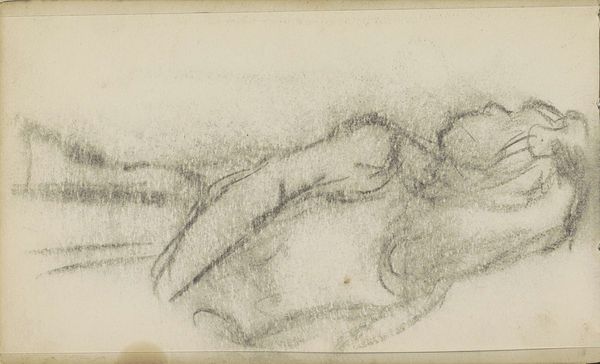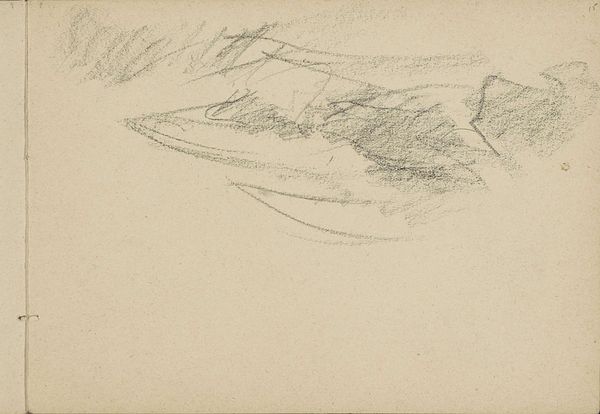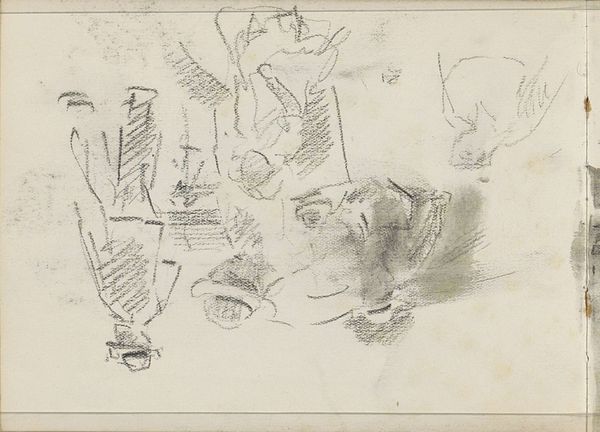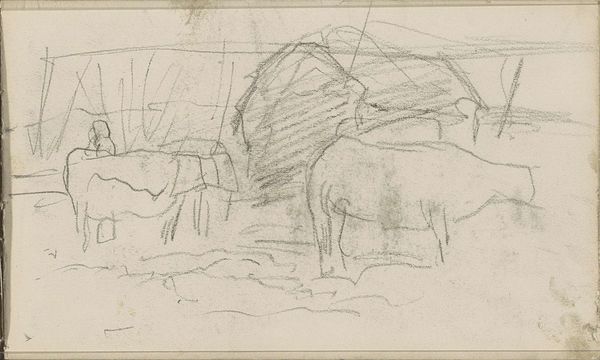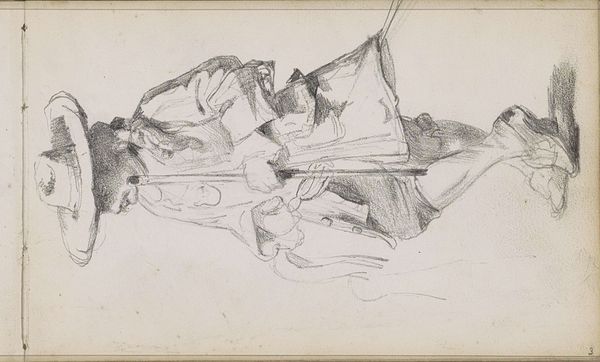
drawing, pencil
#
portrait
#
drawing
#
impressionism
#
pencil sketch
#
pencil
#
sketchbook drawing
#
genre-painting
#
realism
Copyright: Rijks Museum: Open Domain
Curator: This drawing, “Woman with a Basket” by Jozef Israëls, is from sometime between 1834 and 1911. It’s currently held in the Rijksmuseum collection. It’s a pencil drawing. Editor: It strikes me as rather subdued, almost melancholy. The muted tones and the woman's bent posture convey a sense of weariness or perhaps deep thought. The starkness really draws my attention to her form and the basket. Curator: It’s crucial to see Israëls work within the social context of his time. The 19th century saw vast societal shifts, industrialization, and growing awareness of class disparities. Israëls often focused on the lives of working-class people, and that emphasis offered a powerful commentary on inequality. He uses realism to really capture her story, a sort of genre painting with elements of Impressionism, too. Editor: Absolutely. Looking at it through the lens of material culture, one notices how the rough lines and shading, particularly on the basket, emphasizes the physical labor involved in carrying it. This speaks to the means of production inherent in her daily life and survival, which, as you pointed out, directly comments on class differences. It really is a sketchbook drawing with very deliberate focus, using basic materials and a clear connection to a particular place and labor. Curator: And let’s not forget how depictions of women at the time were often highly gendered, with representations largely confined to domestic roles. Here, though, she seems framed, the woman is the worker, perhaps the sole provider, breaking down traditional barriers about labor roles, particularly in contrast with the dominant representation of bourgeois women. This challenges societal norms, highlighting a narrative of strength and resilience. Editor: I think the ambiguity enhances this drawing. It feels more raw, highlighting not just labor, but also the physical and emotional toll it took on women like her. He made it very plain, using pencil. There's no room for artifice here, stripping away anything decorative, any attempt at making it look like something it isn’t, so it only brings the work and materials forward. Curator: By situating this drawing within its socio-political context, we get a richer understanding of both the woman depicted and the artist’s intentions. It becomes more than just a portrait; it's a window into the lived experiences of marginalized communities. Editor: Agreed. It really prompts me to consider how even the simplest materials and subjects can communicate profound messages about work, survival, and the complexities of the human experience within particular environments.
Comments
No comments
Be the first to comment and join the conversation on the ultimate creative platform.

